Unlike the foresail, which is hanked on to the forestay and thus kept under close control, the jib is 'set flying' -- i.e. its tack is hauled out to the end of the bowsprit while its head its hoisted to the masthead. A wire sewn into the luff of the sail prevents the wind from tearing it in half.
The jib on the Blue Moon has always been easy to set: just tie on the lines and haul away smartly before the wind can blow it away. Striking the jib, on the other hand, was like wrestling with a angry tiger: pulling like anything, thrashing away at anything within reach, always looking to jump overboard, and you with it.
I got better at handling it, over the years, but every once in awhile I'd wait too long to take it in, and there'd be too much wind, and the damn thing would try to kill me. I thought about putting it on a roller-furler, but then I went sailing on Agnes and saw how things were managed on a properly rigged boat.
The tack of Agnes's jib was attached to a bowsprit traveler which could be hauled in or out along the sprit. This kept the tack under control at all times, and made setting the much larger jib on Agnes a simple affair. I'd never seen a bowsprit traveler in my life -- or ever heard of one before -- but as soon as I saw it in action, I thought, right... that's for me!
 |
| Jib hauled to end of bowsprit on a traveler on Agnes |
I found a foundry in the Puget Sound region that claimed it could fabricate both a traveler and kranze iron for me, in bronze, in just the sizes I needed. No problem! I will not name this well-known company, but suffice to say I wasted most of the winter waiting for them to 'get around to it'. They never did. Desperate, I finally ordered both from Classic Marine in the UK. These are not off-the-shelf items even for them, but they did manage to fabricate and deliver them on time. Phew. Highly recommended. I'd love to visit them sometime.
Here's what a traveler looks like. The pig tail hook is the traditional shape. You can hook the tack of the sail on to it and it will stay attached. No fumbling with shackles. This one is about 4-inches inside diameter, which is just big enough to fit around the bowsprit, when the traveler is hauled in.
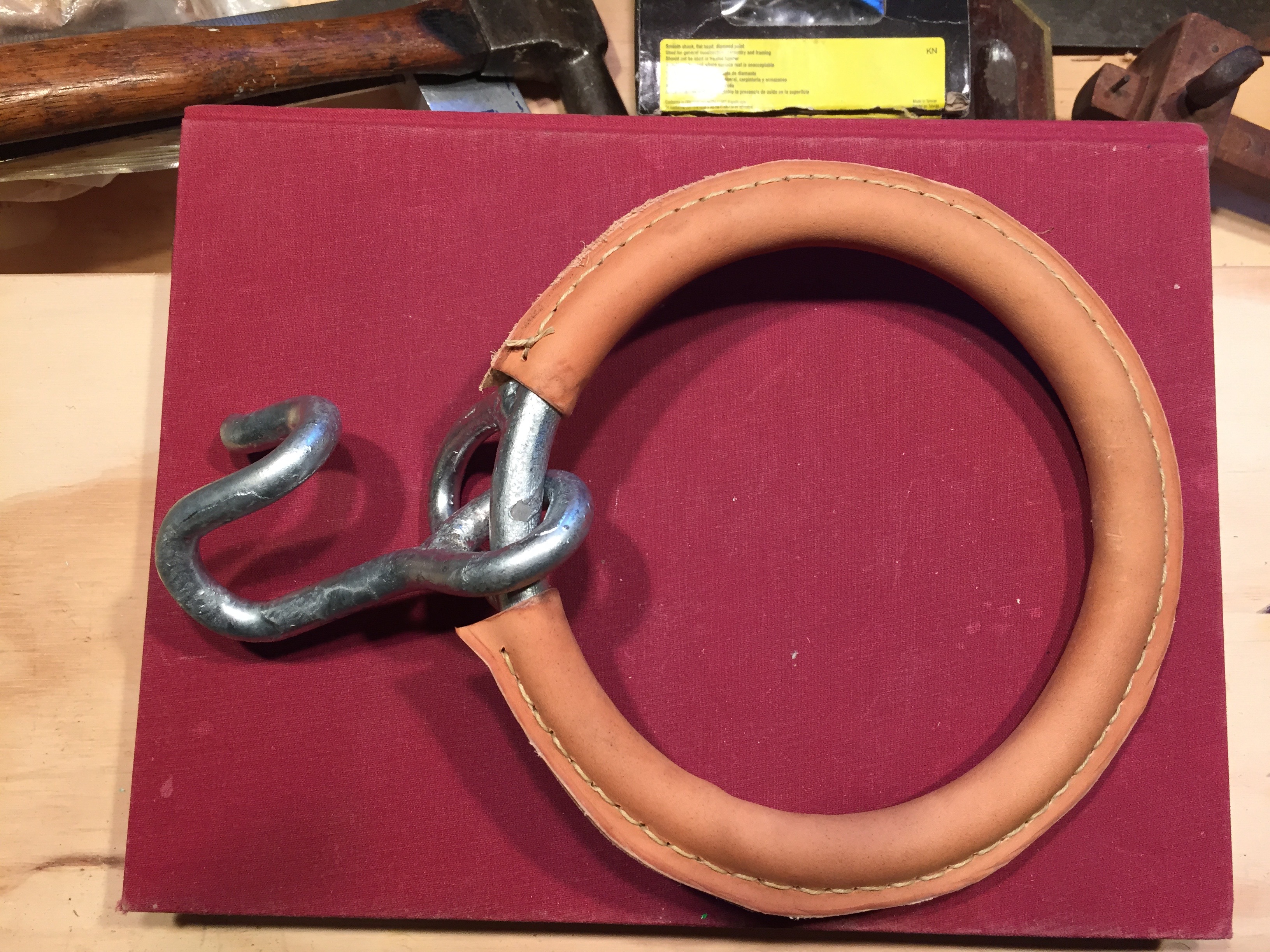 |
| A traveler for the Blue Moon - 4" inside diameter |
The grotty-looking sheave, by the way, I removed from one of the Blue Moon's original wooden blocks. The block body was falling apart, but the galvanized sheave with bronze rollers still had plenty of life left in it. I cleaned it with kerosene and greased it up good before installing it. Bet it's still spinning out there 20 years from now.
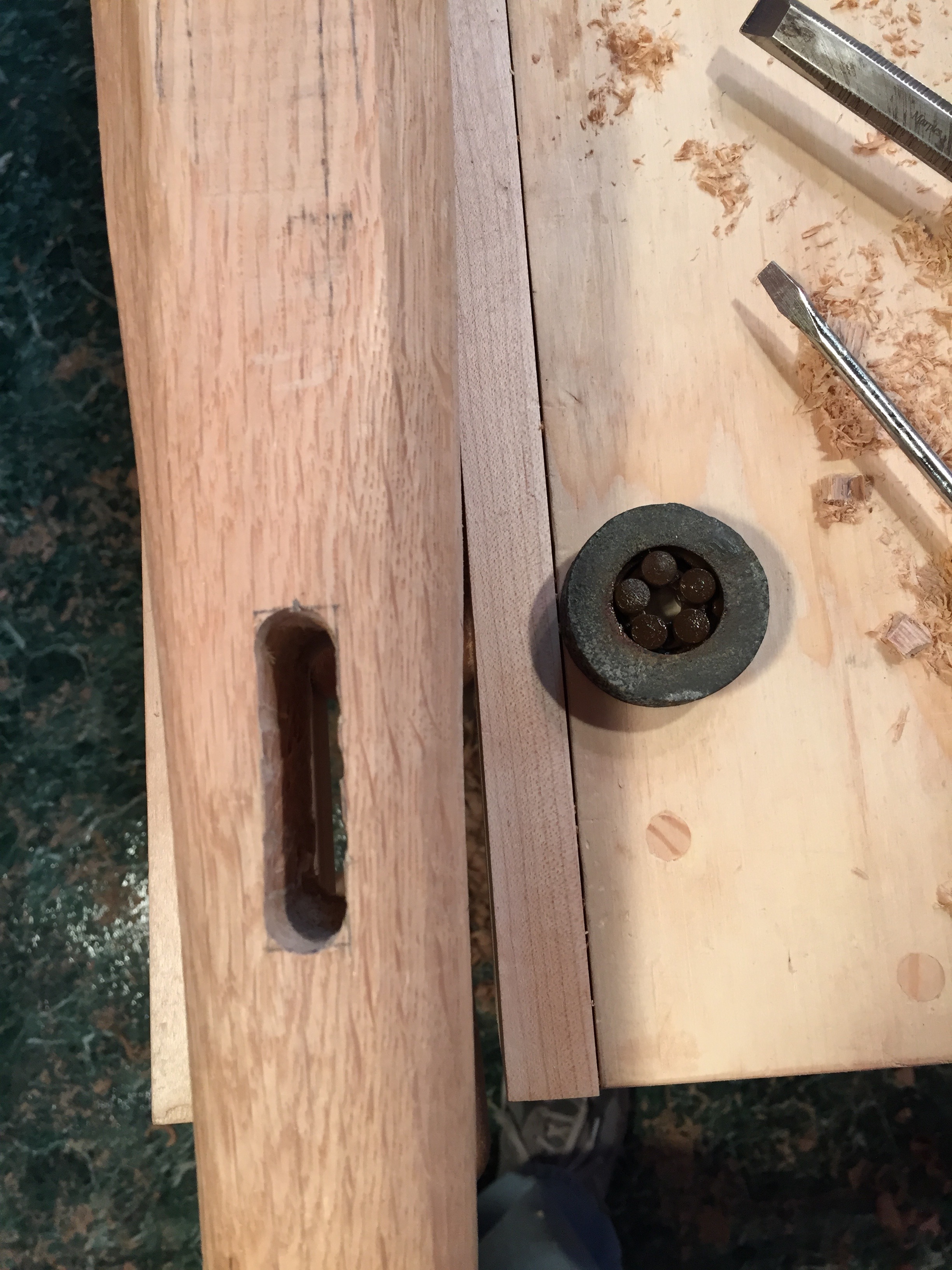 |
| Mortise cut in end of sprit for traveler outhaul sheave |
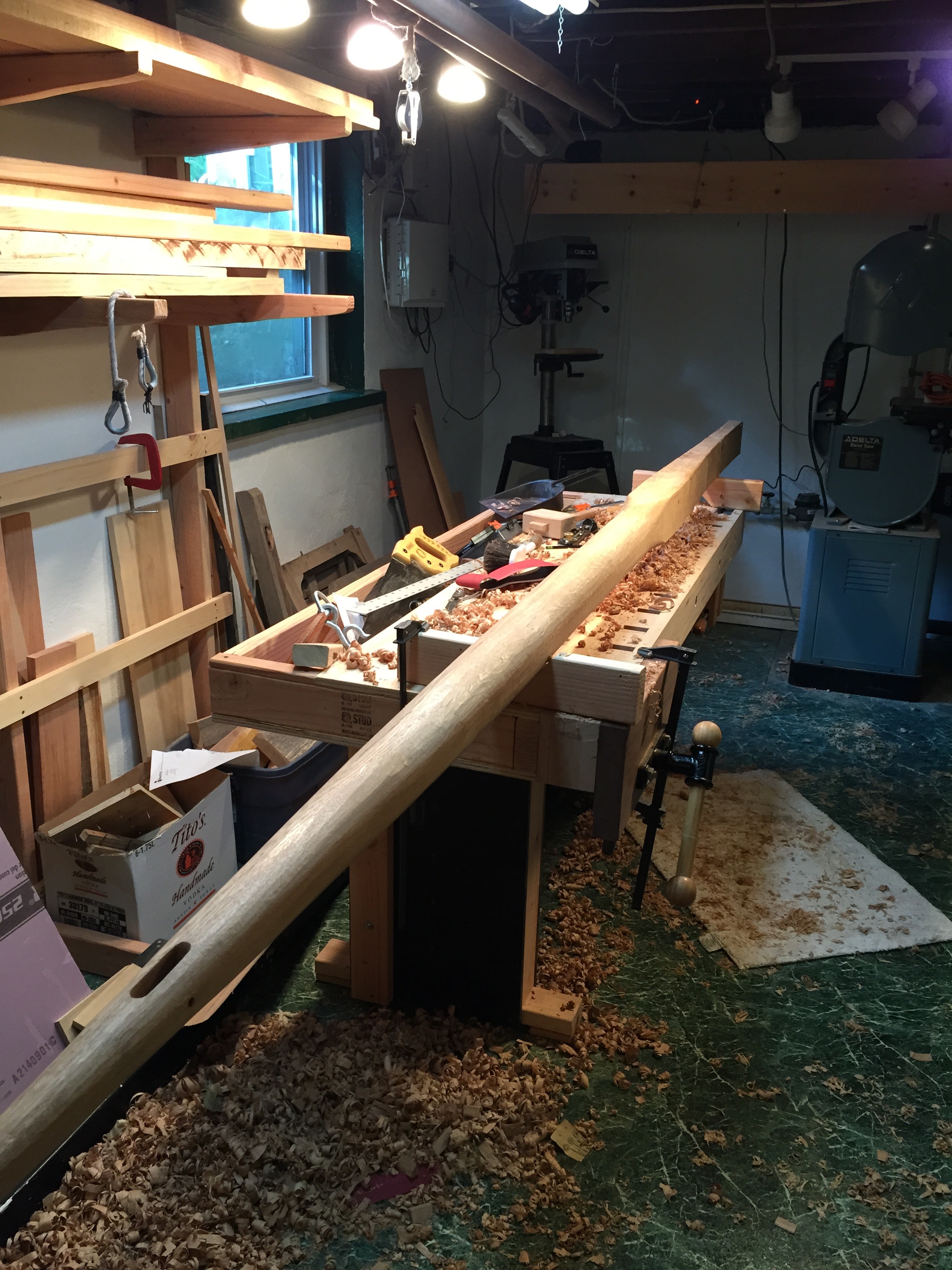 |
| 16-sided sprit |
Luke had finished his bowsprit with deck oil. Not the deck-of-a-ship oil, just plain old backyard-patio-deck oil. Agnes's sprit looked beautiful to me, and John and Captain Flint finished Swallow's new mast with oil in Swallowdale, so for most of the winter, I was pretty set on oiling the Blue Moon's new bowsprit. But neither the sun nor the winters in England are as harsh as they are here in New York, and I really did not think oil would give good enough protection. And besides, there really isn't enough varnished wood in the world these days, so in the end, I decided to varnish the sprit to match the Blue Moon's boomkin.
So, with spring fitfully springing, I hauled the sprit out to the backyard and started applying a coat of varnish per day, at least on days it didn't rain.
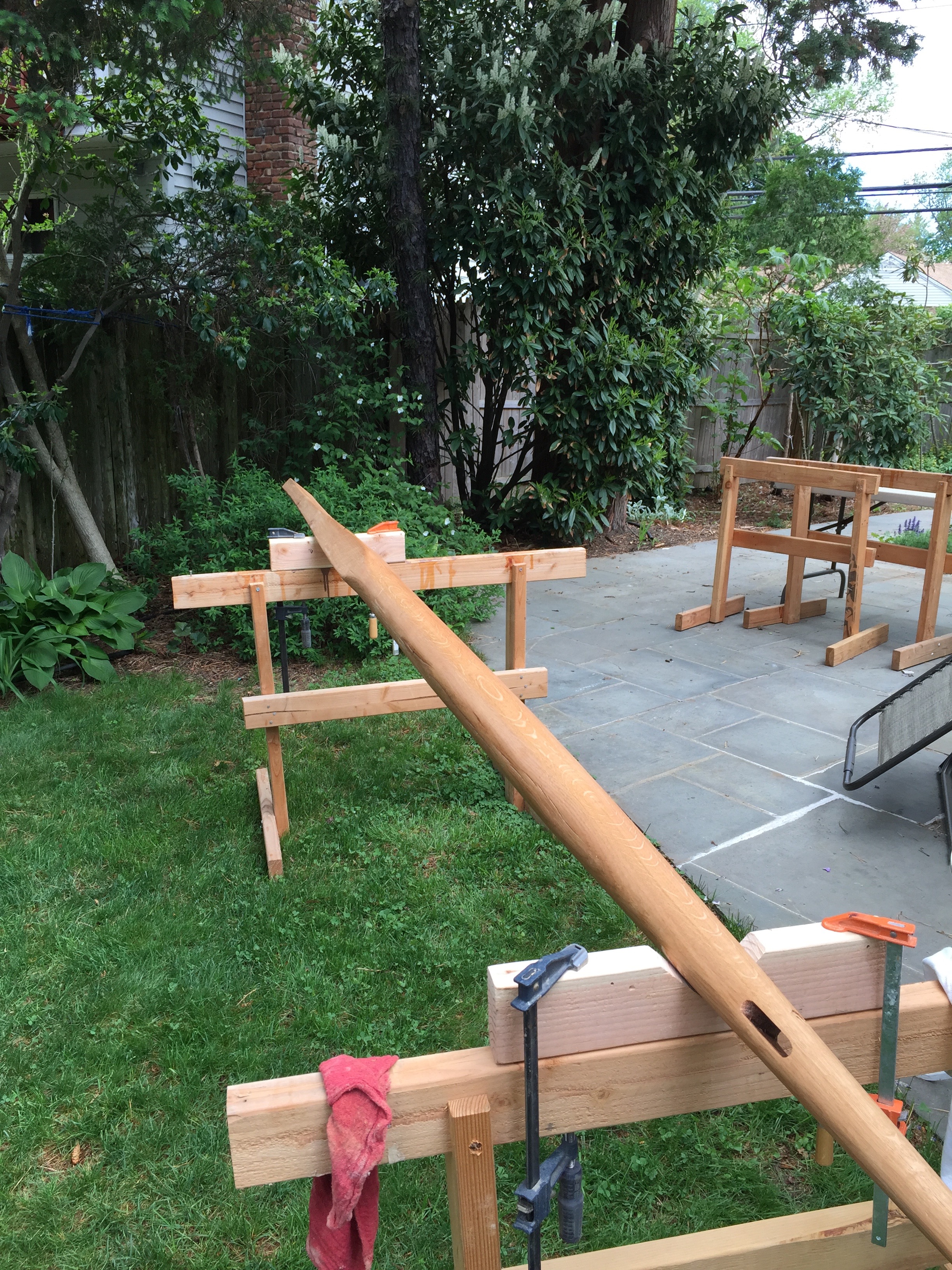 |
| Smoothed and almost ready for varnishing |
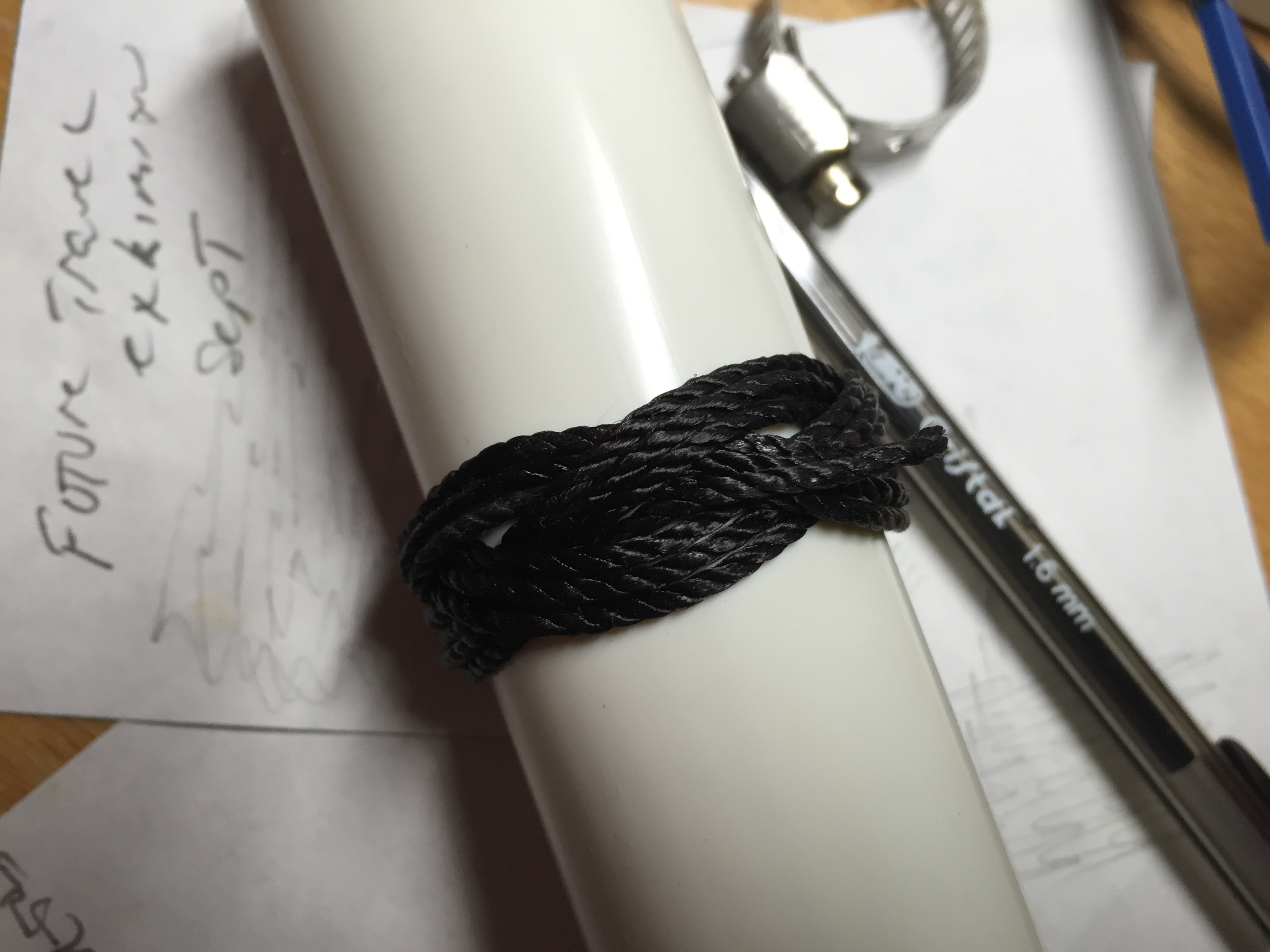 |
| Practicing Turks Head |
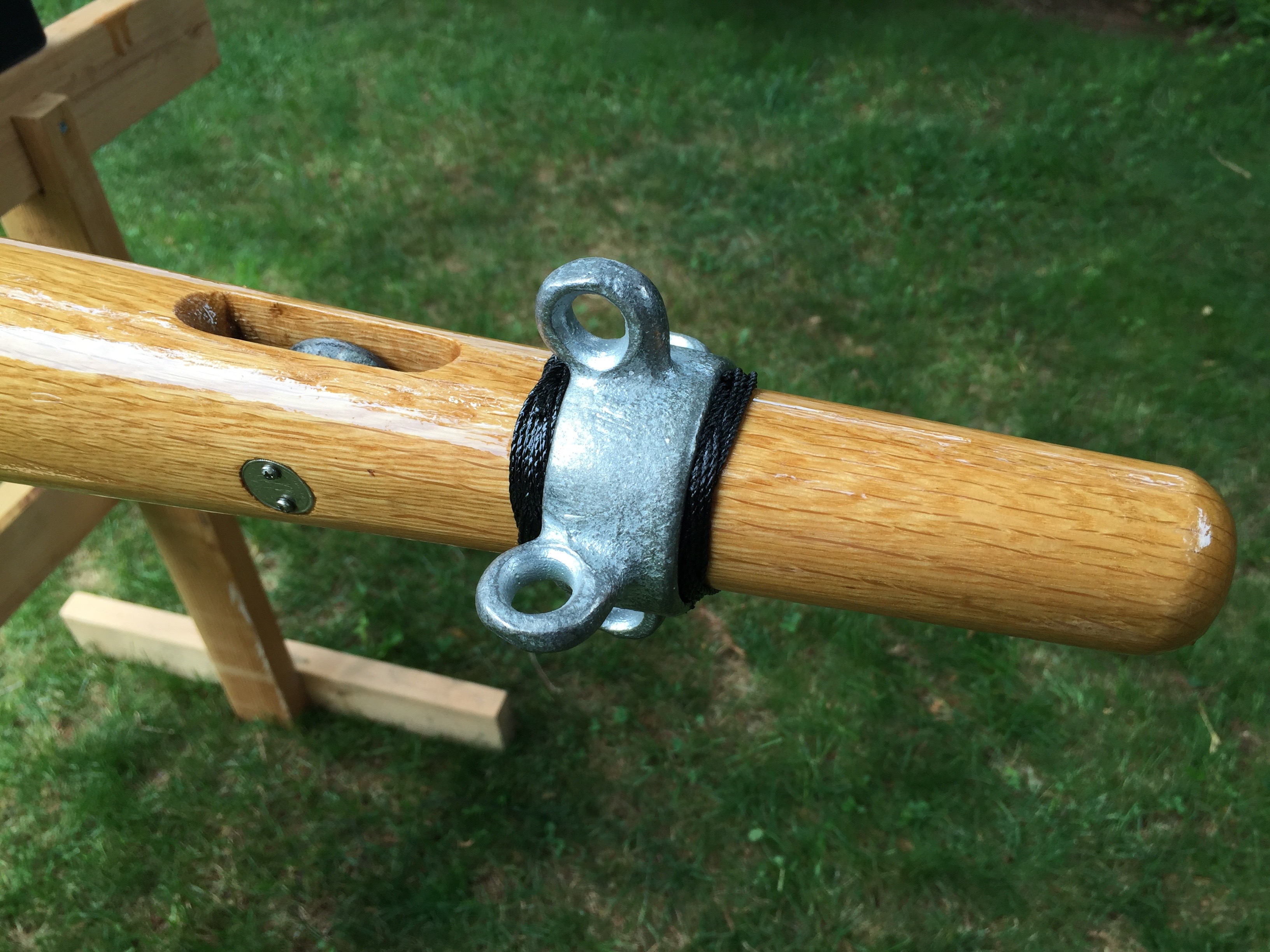 |
| Bowsprit cut to length, with sheave and new kranze iron installed |
With the varnishing complete, there was nothing left to do but to install it. I sure hoped it was the right length for my whisker stays, but there was only one way to find out.
Next Up: Installation
Love the "Do not get in my way comment". Also, I really enjoy following what you are doing. Beautiful work.
ReplyDelete